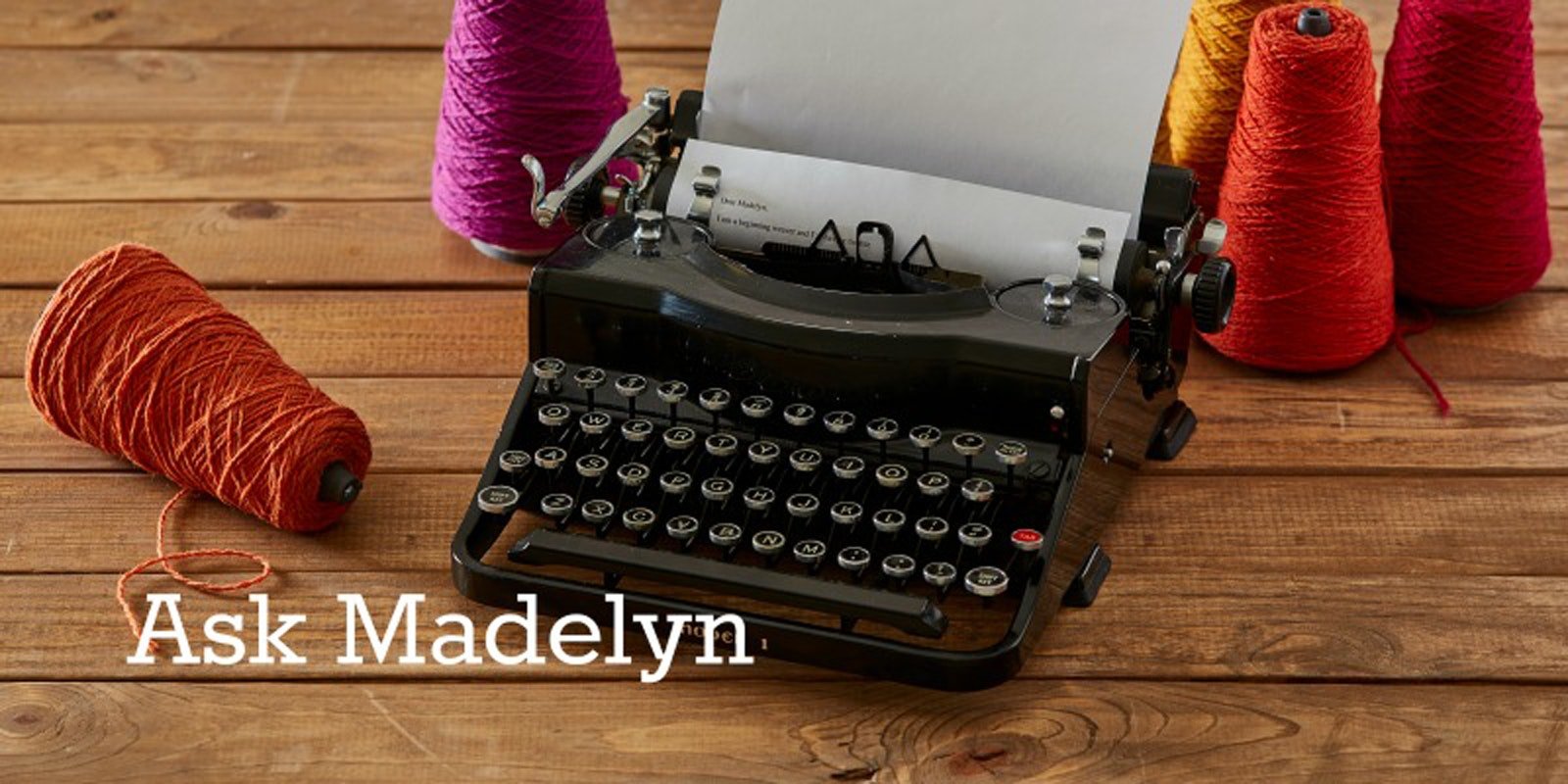Hi Madelyn!
I was recently given a rigid-heddle loom. I have signed up for a class, which I am excited about, but I have a question. Or maybe more than one question. I have always been interested in weaving, and have said so to everyone in my life, which is why a friend gave me this loom. But I am wondering about looms since this one doesn’t look like the looms I see in photographs. What is the difference between this loom and others? What can it or can’t it weave? – Lynda
Hi Lynda!
I may have answered this question before or at least a question like it, but it comes up often enough that it might be good to re-address it.
The rigid-heddle loom is a frame loom in the center of which is positioned the rigid heddle. It is usually made of plastic and has narrow bars with holes in them alternating with narrow spaces, called slots. Warp threads are alternately threaded in the slots and in the holes. If you lift the rigid-heddle, the hole threads (every other warp thread) are raised above the slot threads, if you lower the rigid-heddle, the hole threads are lowered below the slot threads. By raising and lowering the heddle, you can weave a plain-weave cloth.
The advantages to this type of loom are many. The loom is very portable. You can weave with it on a table or in your lap. The action of the heddle itself is very easy on warp threads. Extreme warp tension is not required, so fragile or softly spun yarns (or knitting novelties or eyelash/ribbon yarns) can be used. The spacing of the warp threads depends on the number of slots/holes per inch in the particular heddle, usually eight, ten or twelve per inch, so you can weave fabrics with those warp setts. To weave with finer setts, two rigid heddles can be used.
For weavers who love patterns in cloth, pick-up techniques can be used with rigid heddle looms. The slots allow threads to be picked up on a stick behind the heddle, and the pick-up held in place for rows of weaving.
The other basic type of loom used by contemporary weavers is one with shafts. Every warp thread goes through the eye of a heddle (a needle-like item) that is placed on a frame (the “shaft”). If there are two frames on the loom and the warp is threaded in the two shafts alternately, you can weave plain weave by first lowering (or raising) one of the shafts and then lowering (or raising) the other shaft. Looms with four shafts can weave patterned fabrics (twills, laces, overshot, summer and winter, etc.). The more shafts a loom has the fancier the possible patterns and the greater the number of possible weave structures.
Shaft looms can either be table looms or floor looms. Table looms are portable but usually not as portable as rigid-heddle looms and need a table or stand (you can’t use them in your lap).
Floor looms need space (for the loom and the bench that you sit on to weave). Most table looms cost more than rigid-heddle looms, and floor looms cost a LOT more. (In the cost area, there is usually less loom waste—yarn used for warping that is left over after weaving—on rigid-heddle looms than on table or floor looms.)
Table looms allow many different combinations of raising and lowering shafts without being dependent on the number of treadles on the loom. If the shaft loom has treadles, it provides an additional advantage over a rigid-heddle or table loom. It allows what we call the "rhythm of weaving" that happens when you step on a treadle to open a shed (rather than use your hands to raise the shafts or the rigid heddle), throw the shuttle across, catch the shuttle on the other side, move the beater to position the weft, step on a treadle to open a shed. Doing this, over and over, as you watch a cloth grow is an experience I think of as “more than the sum of its parts.” Weaving is also much faster when you don’t have to use your hands to move the shafts (or heddle).
Basically:
Rigid-heddle loom: portable, not expensive, good with knitting yarns and relatively simple structures and open setts; lends itself to pick-up patterning, embellishment, finger-manipulates techniques
Shaft table loom: portable, less expensive, good workshop loom, can do many weave structures and patterns depending on number of shafts, no limit to combinations of shafts forming the sheds.
Shaft floor loom: not portable, more expensive, needs space, can produce fancier patterns and more weave structures relatively speedily, allows a weaving rhythm, treadles require tying up (to make the different combinations of shafts rise or sink), number of possible combinations limited to the number of treadles.
Hope this helps! Madelyn

